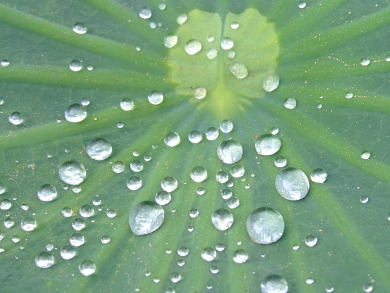Nature abounds with water-repellent surfaces: insect wings, rice leaves, and lotus leaves, to name a few. Other surfaces hold water droplets tightly: gecko feet, rose petals, and peanut leaves. Chemical compositions and structural features enable these surfaces to shed or hold water.
Tao Hang, Ming Li, and colleagues, Shanghai Jiao Tong University, China, used electrodeposition to create surfaces covered in gold-coated nickel nanocones that mimic the water-shedding properties of cicada wings. The surfaces kept their water-shedding properties even after being stored for a year in air at room temperature.
The researchers fabricated complementary surface structures by etching away the nickel nanocone arrays embedded in a gold coating, leaving cone-shaped pits. These surfaces held water droplets even when they were turned upside down.
The team examined the effects of nanocone size and spacing on the properties of the surfaces in order to optimize their performance. They deposited aqueous solutions with a wide range of pH values onto the hydrophobic surfaces and used the porous surfaces as “mechanical hands” to pick up these droplets, transport, and deliver them to another surface.
- Bioinspired Multifunctional Au Nanostructures with Switchable Adhesion,
Xiu Mo, Yunwen Wu, Junhong Zhang, Tao Hang, Ming Li,
Langmuir 2015.
DOI: 10.1021/acs.langmuir.5b02472




